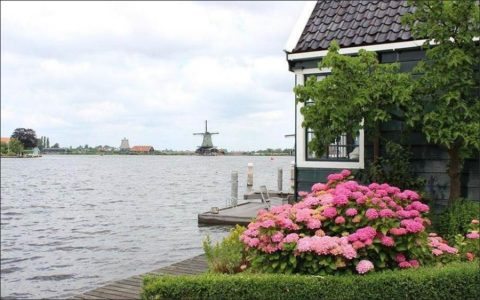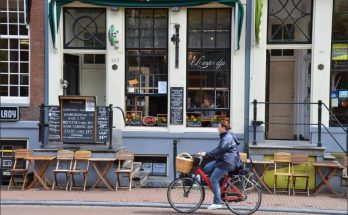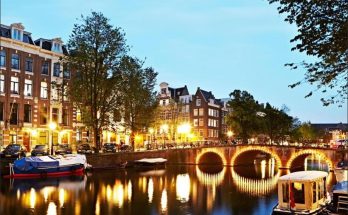Thus have other countries named this land: Les Pays-Bas., I Pacsi Bassi, Die Niederlands; It is the low flatness of the landscape that strikes the foreigner. But the Dutch painters saw more than the low country itself: they saw also the lofty skies with the wonderful light in the fleeting clouds above the green countryside and the water. This is the vision of the Low Countries propagated throughout the world in the work of their painters, and thus did the foreigner learn to comprehend that completely distinct world where the spirit of man is drawn towards the far distance, beyond the horizon, where land, sky, water, and cloud appear to merge into one.
This low country is no Arcadian pasture land, benignly and generously spilling from its lap all that man and beast require. Left to itself it would soon revert to sea or swamp. Those who dwell here live in perpetual anxiety for the soil upon which they work, which must feed them, and which they will preserve for those who come after them. Hence it is that the inhabitants of the Low Countries are a distinctive type of people-tough, tenacious, and taciturn, preoccupied with their own small individual affairs, yet with their gaze directed towards the far, misty horizon with an inner yearning for what lies beyond. It was inevitable that such a people should become a nation of merchants and seafarers. That it should produce painters of shimmering skies, of silver-grey atmospheres, of the cool tranquillity of domestic interiors, and the patient observation of the portrait, was similarly a natural outcome.
But the Netherlands is not only the low country of polders and windmills. There is yet another Netherlands which the foreigner does not know so well, the older, higher land south of the great rivers and east of the IJsel. There the conflict between the threatening waters and the protection of the land is unknown.
If, from time immemorial, grassland has dominated in the polders, where cattle graze and milk and cheese are the staple products, on the higher ground the farmer possesses his land to plough and sow; there the harvest ripens in the fields and the orchards are heavy with fruit. It is noteworthy that in the lower regions hemmed in by the dykes the inhabitants are predominantly Calvinist, while south of the great rivers and in wide regions east of the IJsel the Catholic religion claims the majority. These older regions, backward and neglected during the seventeenth and eighteenth centuries, were also the first to become industrialised during the nineteenth.
The Netherlands has been able to profit by its favourable position at the junction of many roads in the heart of western Europe. Here the great rivers flow into the North Sea. Here, in the course of history, only one important opponent was able to arouse Dutch rivalryEngland, the other great sea power of the northwest. It was of the utmost importance for Dutch culture that trade routes are nearly always channels of culture.
The Dutch land is one of contradictions: the marl rocks of south Limburg are as much part of the landscape as the polders and tulip fields of the province of Holland, and the same is true of the heaths of Drente and the Veluwe, of the Achterhoek, of the dignified Sticht, of the charming landscape of Twente, and of thickly wooded Brabant. And are not the inhabitants as varied as the regions themselves? The Frisian has a completely different disposition from the native of Gelderland, who in his turn differs from the Limburger with his Latin cast of mind. The man of Holland is not the same as the man of Brabant, and the Zeelander is not at all the same as the Hollander. Yet despite these many differences and various contrasts it is still the essential harmony which, in the words of the motto of the old Republic-concordia res parvae crescunt-renders the little great.
The Netherlands is one of the most densely populated areas in Europe. Upon a land-territory of about 13,507 square miles there live fully 11,000,000 people. This gives rise to serious problems, not only for the population, large numbers of which are compelled to seek their welfare abroad, but also in respect of the beauty of the landscape, which is menaced both by the increased housing construction and by intensive industrialisation.
It is thus by no means surprising that this country retains only a few unspoiled natural reserves which might give some clue to the original state of the land. The few that remain have already become for the most part recreation areas for the steadily increasing population, and it is obvious that this fate is hardly conducive to their survival.



